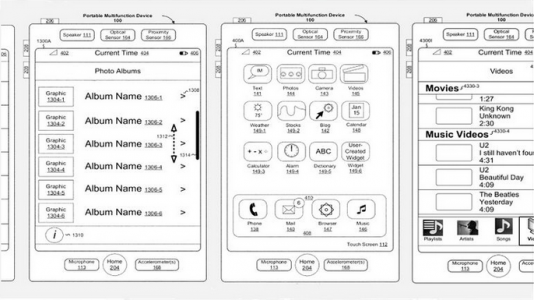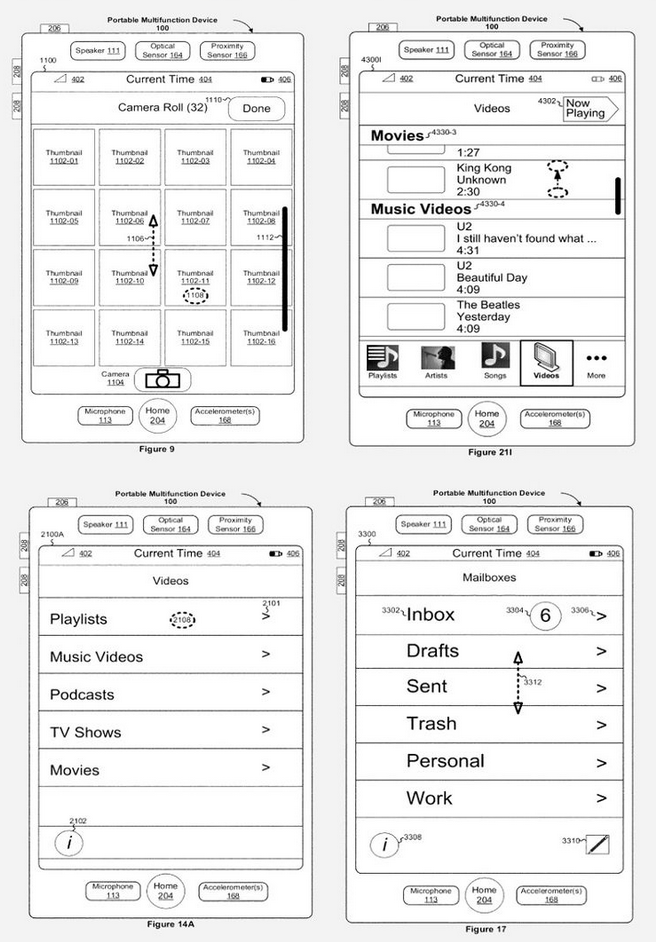5 years since launch IPhone and iOS 1, Apple finally has a patent for the interface that practically changed the way we look at mobile phones. Many smartphones of 2007 had a similar interface, but what Apple did inspired many other companies. Because Apple patents almost everything, the images above describe the iOS interface as it is now patented by the Apple company and this new patent could represent a major problem for Android terminal manufacturers.
This invention patent covers a very wide range of graphic interfaces and if you look at it a little you quickly realize that most operating systems for mobile terminals have the elements arranged similarly on the screen. Now Apple will definitely use this patent to attack the manufacturers of Android terminals and not only, but it remains to be seen how successful it will be.
A method, comprising: at a portable multifunction device with a touch screen display: displaying a portion of an electronic document on the touch screen display, wherein the displayed portion of the electronic document has a vertical position in the electronic document; displaying a vertical bar on top of the displayed portion of the electronic document, the vertical bar displayed proximate to a vertical edge of the displayed portion of the electronic document, wherein: the vertical bar has a vertical position on top of the displayed portion of the electronic document that corresponds to the vertical position in the electronic document of the displayed portion of the electronic document; and the vertical bar is not a scroll bar; detecting a movement of an object in a direction on the displayed portion of the electronic document; in response to detecting the movement: scrolling the electronic document displayed on the touch screen display in the direction of movement of the object so that a new portion of the electronic document is displayed, moving the vertical bar to a new vertical position such that the new vertical position corresponds to the vertical position in the electronic document of the displayed new portion of the electronic document, and maintaining the vertical bar proximate to the vertical edge of the displayed portion of the electronic document; and in response to a predetermined condition being met, ceasing to display the vertical bar while continuing to display the displayed portion of the electronic document, wherein the displayed portion of the electronic document has a vertical extent that is less than a vertical extent of the electronic document.


















